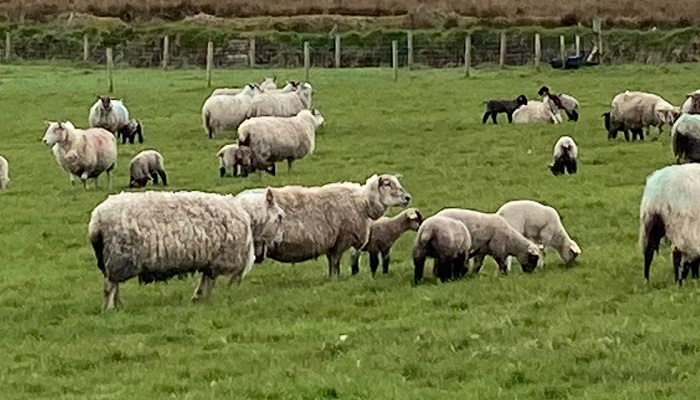12 June 2021
Getting Lamb Performance Back on Track

Watch out for poor lamb performance where grass supply may have been inadequate recently. March lambing flocks, where ewes have passed their peak milk supply and grass accounts for a bigger portion of the lamb’s diet may be most impacted. Teagasc Mayo advisor Andy Ryder has some advice.
This year, for the most part, has been a very positive year for sheep farmers with record lamb prices, good scan results and relatively good weather during lambing that has kept mortality on farms low. The only negative to date is the poor grass growth that occurred recently. Where farms are short of grass, extra meal has had to be fed to ewes and there is delayed take up of silage ground.
Lamb performance will be affected on farms where grass supply is poor and meal feeding has stopped. This is particularly the case for March lambing flocks, where ewes have passed their peak milk supply and grass accounts for a bigger portion of the lamb’s diet. These farms also have a high portion of ewes with twins.
What you need to avoid is lamb performance stalling at this critical time. If this occurs a large number of lambs at weaning will not be at target weight and in poor condition. It will take a big effort to finish these lambs in terms of time and meal. This will leave some farmers with limited options next July/August when deciding what to do with them after weaning. We are seeing this now with early born flocks where lambs are at suitable slaughter weights but not at correct fat cover and farmers are disappointed with kill out and price as a result.
How can we improve the situation?
Grass Supply
Assess your grass situation now. If fertiliser has not been applied yet (or was applied last March), now is a good time to apply fertilizer to boost growth, especially on heavily stocked farms where grass demand is only going to increase. One positive of the cold snap is when grass does grow, the quality will be good.
Topping
Later on in the year, don’t be afraid to top swards to improve grass quality when swards get strong or else look to take out surplus bales. This will improve grass quality and improve lamb growth rates.
Dosing
At this stage, most March born lambs should be dosed to control Nematodirus. Future doses will be for stomach worms, so active ingredients used will depend on whether there is any known resistance on the farm. Faecal egg count (determine when to dose) and drench test (to check if the there is resistance to product used) should be considered on farms with problems achieving good animal performance when grass quality is good.
Lameness
Lameness may reduce performance if not dealt with promptly. Each farm should have a system in place to reduce lameness and good handling facilities are key to this.
Meal Feeding
While meal feeding will improve lamb performance, it can be costly if intake is not controlled prior to weaning. It can also hide poor grassland management. The ideal situation is to have good animal performance from grass and feed meal at low levels to finish lambs earlier. Creep gates and trough feed could be used but there is extra labour associated with this. These are not suitable on farms with no paddock grazing system.
Feeding 300g per day will bring forward the finishing date by one month and issues of fat cover will be eliminated. Feeding lambs has a place, but make sure to do your sums.
You might also like to read Preventing Blowfly strike in Sheep this summer
Teagasc Advisors are regular contributors of articles to Teagasc Daily. You can contact any of our Teagasc offices using this link Teagasc Advisory Regions here
